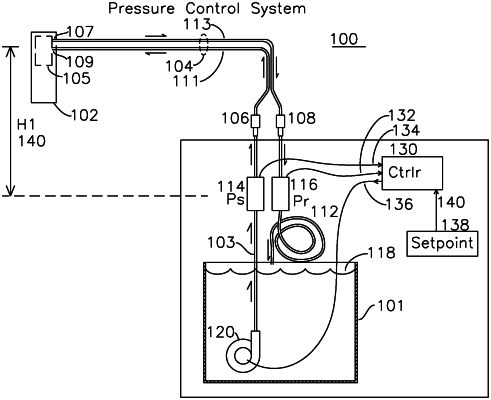| CPC A61F 7/02 (2013.01) [A61F 2007/0029 (2013.01); A61F 2007/0039 (2013.01); A61F 2007/0056 (2013.01); A61F 2007/0092 (2013.01)] | 19 Claims |

|
1. A method for regulating pressure in a pressurized cooling system comprising:
a controller;
a reservoir coupled to a pump, the pump providing a pressure;
the pump coupled to, in sequence, a first hose having a first length, a supply pressure sensor coupled to a second hose having a second length, the second hose coupled to an inlet of a bladder, the bladder having an outlet coupled to a third hose having a third length, the third hose coupled to a return pressure sensor configured to return fluid pumped through the third hose to the reservoir;
the bladder located at a first elevation different from a second elevation of at least one of the supply pressure sensor or the return pressure sensor;
the second length being substantially equal to the third length;
the method comprising:
estimating a pressure in the bladder by averaging a pressure sensor measurement of the supply pressure sensor and a pressure sensor measurement from the return pressure sensor;
comparing the estimated bladder pressure to a setpoint pressure to output a pump control voltage coupled to the pump;
the controller establishing the setpoint pressure by adding a head pressure offset to the desired cuff pressure, the head pressure offset derived from a difference between the first elevation and the second elevation.
|